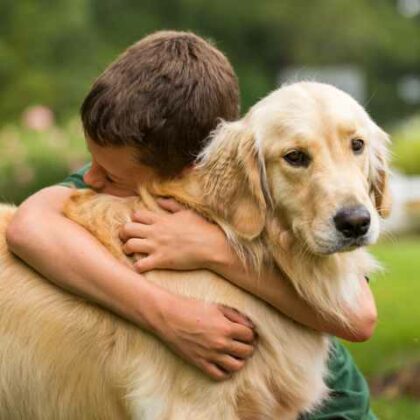
An article in the New York Times focused on borrowing from an approach to dealing with children. When dealing with someone you care about who is agitated, upset or overwhelmed, you can ask one simple question: “Do you want to be heard, helped, or hugged?”
Depending on who we are, our initial response may not be what’s needed. Taking a moment to ask, “Do you want to be heard, helped or hugged?” opens the way to hearing what is actually wanted in response.
Our natural impulse to help may not be useful for someone who just wants to vent, or who simply wants comfort and reassurance. Likewise, a hug is not useful when the person is seeking a solution, and simply listening when someone needs help or a hug is less than sufficient.
We can ask the same question of our dogs, horses and other animals when they are upset, overwhelmed or agitated. “Do you wangt to be heard, helped or hugged?”
Such a simple question, and yet woven through it are some very profound concepts.
First, it reflects a deep respect for the other’s perspective and needs, and an understanding that how we might want to respond to them may not be what they need from us.
Second, it provides choice, and in choice, we give them a sense of control. While this may be more true in dealing with humans than with animals, I think we still can give animals a choice and follow their lead.
Do we simply need to allow them time to express their anxiety or frustration or resistance?
That might mean calmly waiting with them until their feet and mind are in the same place again, without taking their behavior as commentary on the relationship with them or on us as trainers & handlers.
The specter of Skinner et al. sits on our shoulders sometimes, whispering that if we let the animal do x, y or z, they will be reinforced and the behavior they are exhibiting will just continue! Anxiety, fear, frustration, resistance, even anger – these are not behaviors, but emotional states.
Do you worry about allowing a friend to vent? How might you feel if you needed to vent, but a well meaning friend said, “Oh, let’s not practice that negative state. Let’s play chess instead and get your mind on something else.” Unfortunately, deciding to ‘distract’ someone who needs to vent can end up discounting or dismissing their feelings. With safety in mind (always), consider that it may be safe to let an animal vent and release that emotion.
Does the animal need us to help them to find a solution?
That might mean helping them apply a skill they already have but have forgotten in that overwhelming moment. Maybe it’s direct communication that helps them move to a better place mentally, emotionally and/or physically. “Let’s move over here and block that line of sight to the scary person.” “If you can sit, you might be more stable than when you are moving.”
Part of our responsibility as handlers is to recognize how we can be helpful. I’d suggest that this is not done by insisting on behaviors in the misguided belief that we will help them by “distracting” them. We might help them by offering the support the need to complete a task. Or we can make things easier by changing the goal or expectation, or even walking away from a situation. We might change gears altogether so they can be successful.
If I had a friend who normally did a great job of carving paper thin slices of cheese but was upset that day, I might ask her to beat the heck out of some eggs or fold napkins instead. We can do the same thing with animals when their arousal, anxiety, frustration or confusion blocks them from doing what they might otherwise be capable of doing. Helping them find a solution means helping them find a place where they are right, successful, capable even in small ways.
Do they need us to provide comfort?
Providing calming contact can be so powerful when an animal is worried, afraid, hurting, unsure or overwhelmed. You may feel better touching an animal to help them, but for some, touch can be too much. Quietly being present with and for the animal can be powerful. That does not mean just hanging out and checking your cell phone!
Being quietly present means choosing a place in space that supports but does not invade or pressure the animal, or add to their concern. It means an awareness of your posture, breathing and blink rate, all done deliberately to provide comfort without expectation of response. In that safe space, an animal can choose to interact or not, to touch or not.
Knowing when — and how — to help, hear or hug — ah, that’s the art of relationship!

